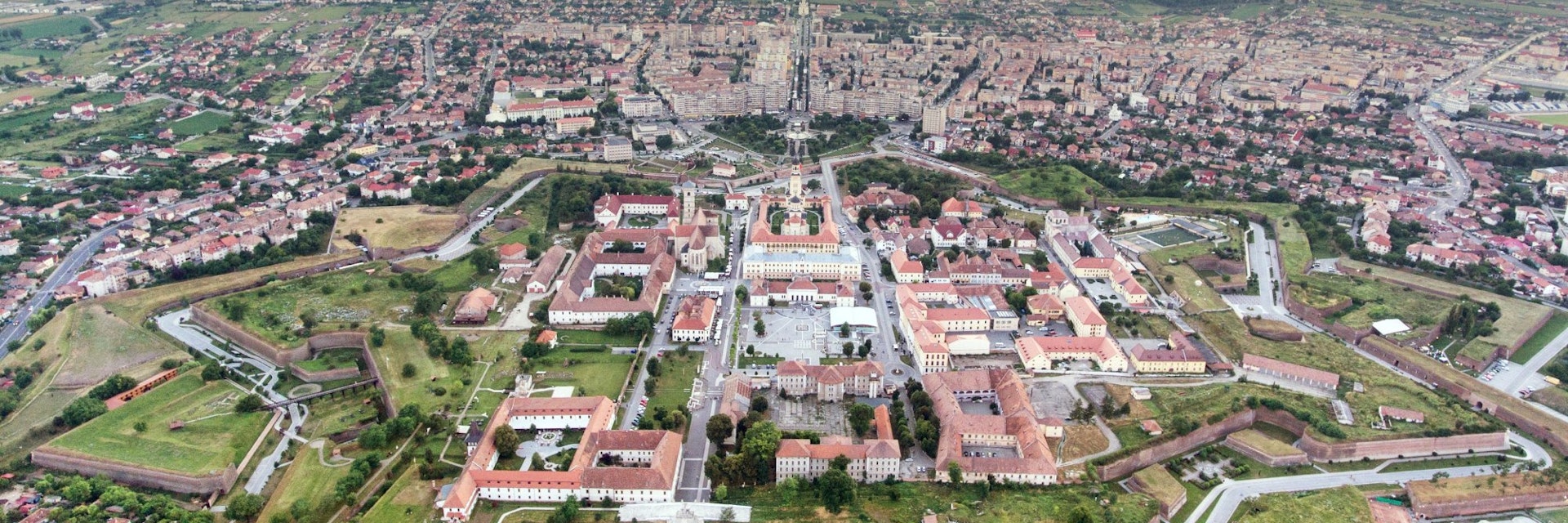Alba Carolina Citadel is the crowning attraction of Alba Iulia. Within this star-shaped citadel are museums, churches and the Unification Hall that sealed the union of Transylvania with Romania in 1918. Originally constructed in the 13th century, the present fortification dates mostly to the 18th century. If you're short on time, focus on the dazzling Coronation Cathedral and National Union Museum. Ideally, spend a full day strolling museums, posing at grand gateways, and idling in cafes. The citadel is free, but the museums carry entry charges.
Str Mihai Viteazul runs up from the lower town to the first gate of the fortress, adorned with sculptures inspired by Greek mythology. From here, a stone road leads to the third gate of the fortress, dominated by a horseback statue of Carol VI of Austria. Above the gate is Horea’s death cell (Celula lui Horea), a reproduction of where Horea, the leader of the 1784–85 peasant riots, awaited his unpleasant end. He and fellow revolutionary Cloşca were crushed to death on wheels on Forks Hill in 1785; Crişan killed himself in prison to avoid this fate. A nearby 22.5m-high granite column, the Uprising Memorial, was erected in 1937 to commemorate these events. It also offers a superb panorama over the surrounding hills.
Just before you enter the third gate, a footpath leads 500m south to out-of-sight Michael the Brave Church. The wooden church, brought to Alba Iulia in 1992 from Maramureş, stands on the site of a former Metropolitan cathedral built by Mihai Viteazul in 1597 and destroyed by the Habsburgs in 1714.
Inside the gates, about 200m west, is the Custozza Monument. This obelisk was raised in 1906 to commemorate soldiers and officers of the 50th infantry regiment of Alba Iulia, who were killed while fighting in the Habsburg army against Italy in the Battle of Custozza in 1866. Close by is the Muzeul Principia; archaeologists unearthed the largest fort in Roman Dacia at this site, and you can admire the old walls and old hypocaust (heating system) within.
Just west is the Union Hall. Within this 1900-built hall, the union between Romania and Transylvania was signed and sealed on 1 December 1918. Facing the hall from the south is a large equestrian statue of Mihai Viteazul (Michael the Brave), ruler of Wallachia, then Transylvania and Moldavia, in the late 16th century; this union crumbled after his execution in 1601. Behind the statue is the Former Princely Palace, once residence of John Sigismund of Transylvania, built in several stages from the 16th century onwards. Mihai Viteazul stayed here briefly too.
Immediately west is St Michael's Cathedral, Romania's most venerable Roman Catholic cathedral, as well as the country's longest at slightly over 89m. Royal tombs, including Queen Isabella and her son (the first prince of Transylvania) are inside, plus a 2209-pipe organ framed by baroque and Gothic decorations.
On the other side of the road is the impressive National Union Museum, which celebrates the 1918 signing of the union between Transylvania and Romania. Close by, near the western entrance of the citadel, rises the highly impressive Coronation Cathedral, built in 1921–22 and designed in the shape of a Greek circumscribed cross. A 58m-tall bell tower marks the main entrance.

